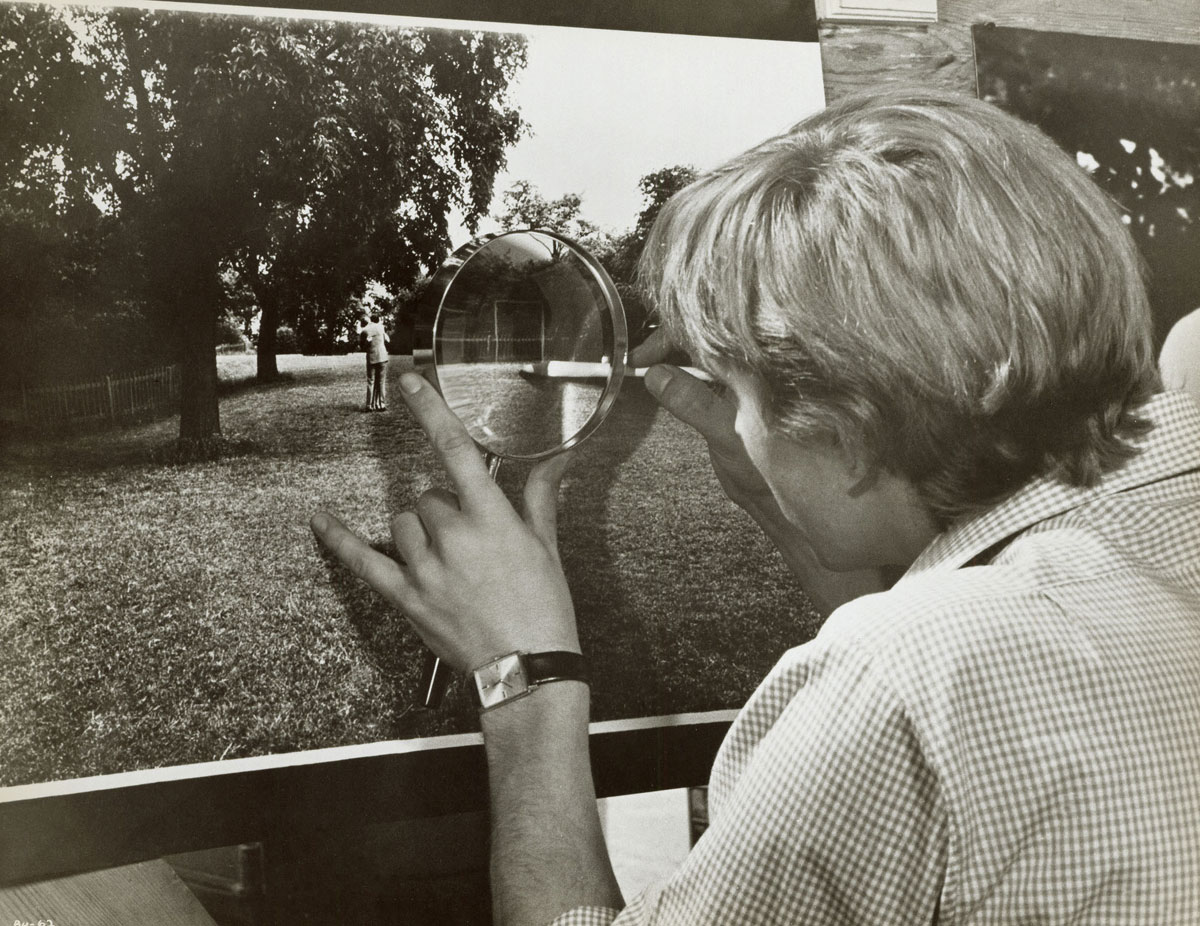97
Myst is an interactive detective film in which the player is cast in the role of detective. It is also a film "shot" entirely in the first person, in itself a remediation of the Hollywood style, where first-person point of view is used only sparingly-except in special cases, such as Strange Days recently and some film noir in the 1940s. (See Telotte, 1989.) Like many of the other role-playing games, Myst is in effect claiming that it can succeed where film noir failed: that i t can constitute the player as an active participant in the visual scene. As Lenny in Strange Days might put it, Myst is trying to be "like film only better."
Myst is an interactive detective film in which the player is cast in the role of detective. It is also a film "shot" entirely in the first person, in itself a remediation of the Hollywood style, where first-person point of view is used only sparingly-except in special cases, such as Strange Days recently and some film noir in the 1940s. (See Telotte, 1989.) Like many of the other role-playing games, Myst is in effect claiming that it can succeed where film noir failed: that i t can constitute the player as an active participant in the visual scene. As Lenny in Strange Days might put it, Myst is trying to be "like film only better."
Myst is an interactive detective film in which the player is cast in the role of detective. It is also a film "shot" entirely in the first person, in itself a remediation of the Hollywood style, where first-person point of view is used only sparingly-except in special cases, such as Strange Days recently and some film noir in the 1940s.(See Telotte, 1989.) Like many of the other role-playing games, Myst is in effect claiming that it can succeed where film noir failed: that i t can constitute the player as an active participant in the visual scene. As Lenny in Strange Days might put it, Myst is trying to be "like film only better."
Myst is an interactive detective film in which the player is cast in the role of detective. It is also a film "shot" entirely in the first person, in itself a remediation of the Hollywood style, where first-person point of view is used only sparingly-except in special cases, such as Strange Days recently and some film noir in the 1940s.(See Telotte, 1989.) Like many of the other role-playing games, Myst is in effect claiming that it can succeed where film noir failed: that i t can constitute the player as an active participant in the visual scene. As Lenny in Strange Days might put it, Myst is trying to be "like film only better."
Myst tries to improve on film by redefining the standard by which we judge film. In many instances of remediation, the new medium must try to convince the viewer to accept a new standard, for the older medium is inevitably superior when judged by its own traditions. In Myst, for example, the mystery is singularly lacking in the rhythmic variations we find in the traditional film. If anything, the game's narrative stillness is like the arrested time in such unusual (and by Hollywood standards unsuccessful)films as Antonioni's L'Avventura, Blow-up and The Passenger.
Myst tries to improve on film by redefining the standard by which we judge film. In many instances of remediation, the new medium must try to convince the viewer to accept a new standard, for the older medium is inevitably superior when judged by its own traditions. In Myst, for example, the mystery is singularly lacking in the rhythmic variations we find in the traditional film. If anything, the game's narrative stillness is like the arrested time in such unusual (and by Hollywood standards unsuccessful)films as Antonioni's L'Avventura, Blow-up and The Passenger.
Myst tries to improve on film by redefining the standard by which we judge film. In many instances of remediation, the new medium must try to convince the viewer to accept a new standard, for the older medium is inevitably superior when judged by its own traditions. In Myst, for example, the mystery is singularly lacking in the rhythmic variations we find in the traditional film. If anything, the game's narrative stillness is like the arrested time in such unusual (and by Hollywood standards unsuccessful) films as Antonioni's L'Avventura, Blow-up and The Passenger.
Myst tries to improve on film by redefining the standard by which we judge film. In many instances of remediation, the new medium must try to convince the viewer to accept a new standard, for the older medium is inevitably superior when judged by its own traditions. In Myst, for example, the mystery is singularly lacking in the rhythmic variations we find in the traditional film. If anything, the game's narrative stillness is like the arrested time in such unusual (and by Hollywood standards unsuccessful) films as Antonioni's L'Avventura, Blow-up and The Passenger.
Myst tries to improve on film by redefining the standard by which we judge film. In many instances of remediation, the new medium must try to convince the viewer to accept a new standard, for the older medium is inevitably superior when judged by its own traditions. In Myst, for example, the mystery is singularly lacking in the rhythmic variations we find in the traditional film. If anything, the game's narrative stillness is like the arrested time in such unusual (and by Hollywood standards unsuccessful) films as Antonioni's L'Avventura, Blow-up and The Passenger.
Myst tries to improve on film by redefining the standard by which we judge film. In many instances of remediation, the new medium must try to convince the viewer to accept a new standard, for the older medium is inevitably superior when judged by its own traditions. In Myst, for example, the mystery is singularly lacking in the rhythmic variations we find in the traditional film. If anything, the game's narrative stillness is like the arrested time in such unusual (and by Hollywood standards unsuccessful) films as Antonioni's L'Avventura, Blow-up and The Passenger.
Unlike in Antonioni's films, however, resolution is possible in Myst, through the solution of a series of puzzles. These puzzles constitute the player as a detective only in the shallow sense, for they do not move the player deeper into the mystery, into a mystery of self. When the player does find and free the father, she does not learn anything about herself. And unlike in Blow-up, the player of Myst ultimately rejects the logic of mediation in favor of the logic of the transparent, which the father Atrus affirms by destroying the books.
The purpose of Myst's remediation of film is not principally to comment on film; the creators of Myst may not even be aware of specific affiliations of their game to films made a generation ago. However, the game is undeniably an exercise in cinematic point of view, and even the vaguest acquaintance with the Hollywood style is enough for a player to appreciate Myst's appropriation and remediation of it.
Unlike in Antonioni's films, however, resolution is possible in Myst, through the solution of a series of puzzles. These puzzles constitute the player as a detective only in the shallow sense, for they do not move the player deeper into the mystery, into a mystery of self. When the player does find and free the father, she does not learn anything about herself. And unlike in Blow-up, the player of Myst ultimately rejects the logic of mediation in favor of the logic of the transparent, which the father Atrus affirms by destroying the books.
The purpose of Myst's remediation of film is not principally to comment on film; the creators of Myst may not even be aware of specific affiliations of their game to films made a generation ago. However, the game is undeniably an exercise in cinematic point of view, and even the vaguest acquaintance with the Hollywood style is enough for a player to appreciate Myst's appropriation and remediation of it.
When the player does find and free the father, she does not learn anything about herself. And unlike in Blow-up, the player of Myst ultimately rejects the logic of mediation in favor of the logic of the transparent, which the father Atrus affirms by destroying the books.
When the player does find and free the father, she does not learn anything about herself. And unlike in Blow-up, the player of Myst ultimately rejects the logic of mediation in favor of the logic of the transparent, which the father Atrus affirms by destroying the books.
The purpose of Myst's remediation of film is not principally to comment on film; the creators of Myst may not even be aware of specific affiliations of their game to films made a generation ago. However, the game is undeniably an exercise in cinematic point of view, and even the vaguest acquaintance with the Hollywood style is enough for a player to appreciate Myst's appropriation and remediation of it.
The purpose of Myst's remediation of film is not principally to comment on film; the creators of Myst may not even be aware of specific affiliations of their game to films made a generation ago. However, the game is undeniably an exercise in cinematic point of view, and even the vaguest acquaintance with the Hollywood style is enough for a player to appreciate Myst's appropriation and remediation of it.
 Log-in
Log-in Source type: picture
Source type: picture Source type: picture
Source type: picture Source type: picture
Source type: picture Source type: picture
Source type: picture Source type: picture
Source type: picture Source type: picture
Source type: picture Source type: picture
Source type: picture Source type: picture
Source type: picture